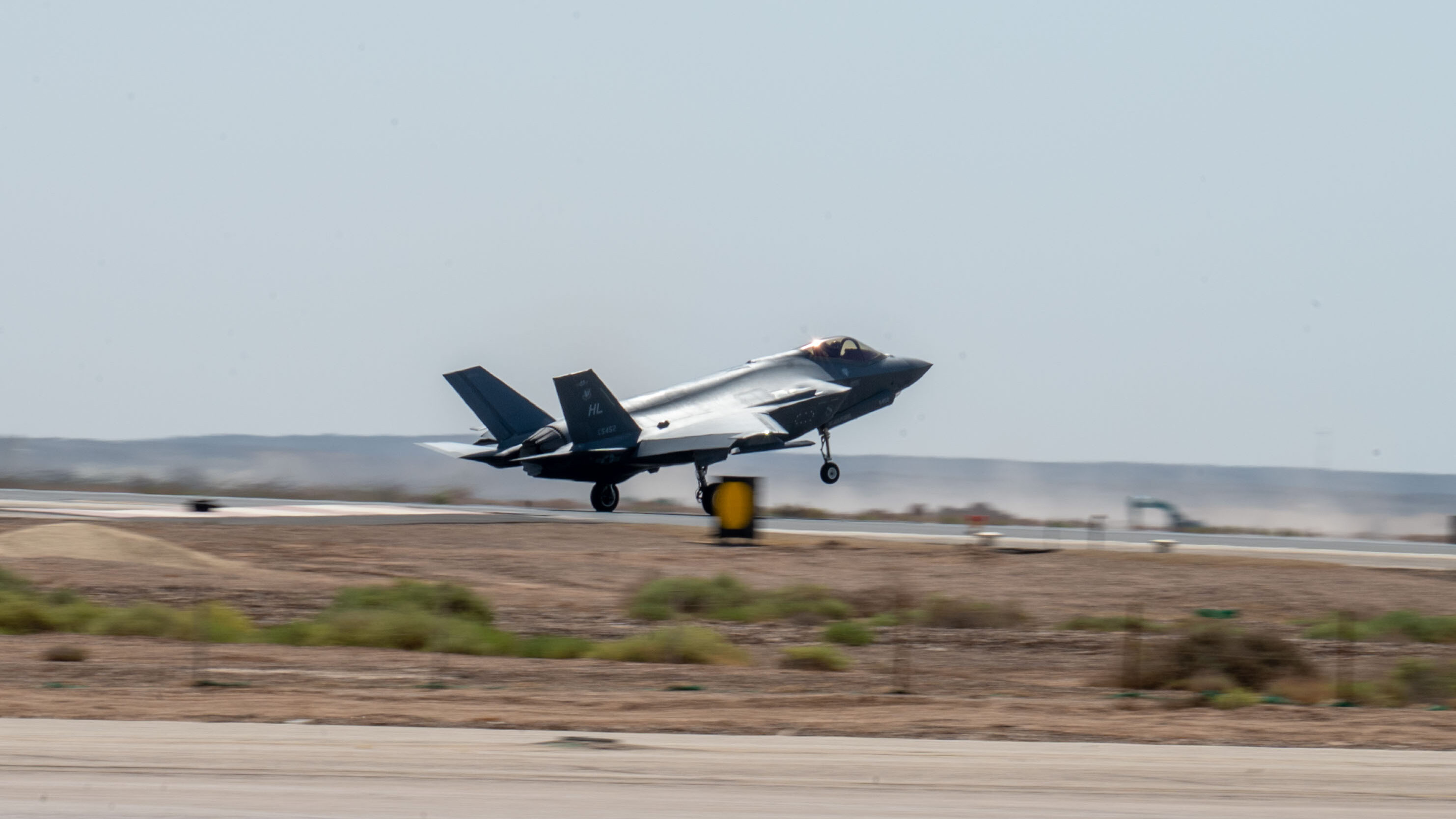
An U.S. Air Force F-35A Lightning II aircraft assigned to the 421st Expeditionary Fighter Squadron lands in the U.S. Central Command area of responsibility July 25, 2023. U.S. Air Force photo by Staff Sgt. Christopher Sommers
Iran has the capabilities to detect, track and intercept United States F-35 stealth fighter jets, Chief of the Self-Sufficiency Research Organization of the Iranian Air Defense Force told the Mehr News Agency on September 2.
General Samad Agha-Mohammadi was commenting on the U.S. recent decision to deploy F-35s in the Middle East.
The F-23 was designed to perform both air superiority and strike missions. The stealth fighter jet is also able to provide electronic warfare and intelligence, surveillance and reconnaissance capabilities.
On July 25, a squadron of F-35s arrived in the region to respond to Iranian movements in the Gulf and the Strait of Hormuz, a choke point between the Arabian Gulf and the Gulf of Oman, through which roughly 20 percent of the world’s oil supply flows.
The deployment was not very successful however. Deputy Pentagon Press Secretary Sabrina Singh told reporters on August 29 that the stealth fighter jets didn’t deter Iran.
“We continue to see harassment,” Singh said. “We have not seen that threat drop, I would say, so we haven’t seen a reason to move our forces out.”
Tensions have been mounting in the Middle East since Iran seized two oil tankers on April 27 and May 3 in the Persian Gulf, reportedly in response to the capture of a China-bound Iranian oil shipment by the U.S. near southern Africa on April 22.
Gen. Agha-Mohammadi remarks are not surprising considering that Iran possesses one of the largest air defense networks in the Middle East. The network includes passive, bistatic and multistatic radars that are in theory capable of detecting stealth fighter jets like the F-35.
MORE ON THIS TOPIC:






treba poskytnúť pomoc sýrii a tá nech zopár f35 dá dolu z oblohy!!! sú predsa v sýrii nezákonne a teda ich možno pokladať za okupačné sily!!! br osn nebude mať istotne žiadne námietky a v prípade konfliktu sa postaví na stranu sýrie!!! lebo sýria je v tomto prípade okupovanou krajinou, nie usa!!!
the mid-east deployment of the f-35 will give iran and it’s primary allie the opportunity to develop and improve radar detection of it’s primary b-61 hauler giving up more than they will get in an attempt to intimidate iran.
the f35 is not very stealthy once you load it up with ordinance under its wings. it is only stealthy when flying at night and when only using it’s internal bomb bay. once again the us has bought an overly expensive fragile and expensive to repair airframe which does alot of things ok but nothing top notch. reminds me of the f4 phantom over vietnam. when will the are farce ever learn. dumb fighter jocks and crooked defense contractors. bet the damn thing even has a gold plated toilet in it.
ha ha ha f35 junk what a waste of money